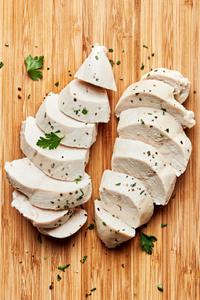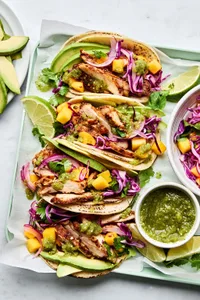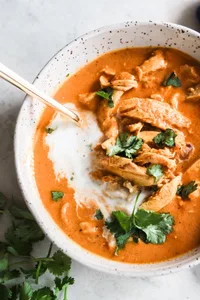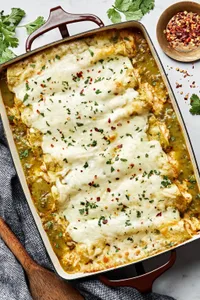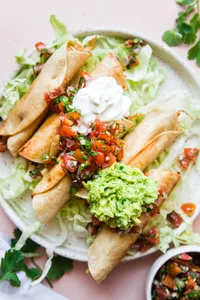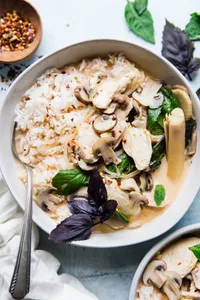How To Make Poached Chicken Breast
Whether you slice it into rounds and serve alongside a green salad for a ladies-who-lunch-style supper (pass the Chablis, please), or add it to a simple salad for a quick weekday lunch, poached chicken is a fast and easy classic.
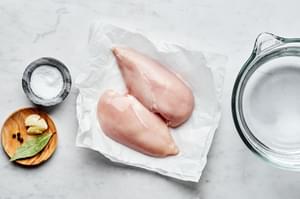
What is Poaching?
Poaching is a gentle, “moist-heat” cooking method that uses water or broth held at a low heat—always below a boil, usually barely at a simmer—to cook foods of all kinds. The ideal poaching temperature is between 170°F and 180°F. It’s important not to let the cooking liquid come to a boil or even a vigorous simmer or else (for all sorts of science-y reasons having to do with heat and moisture) you risk ending up with a tough piece of meat. Remember, poaching is a low-and-slow cooking method. If you need hot and fast, try air fryer chicken instead.

How to Poach Chicken Breast:
Patience is the key to a perfect poached chicken breast. Here’s what you need to know:
Begin by placing your raw, boneless, skinless chicken breasts in a wide, shallow pan.
Cover with water. Add cold water to the pan and fill until the chicken breasts are fully submerged. Add the bay leaf, peppercorns and garlic.
Bring the water gently up to temperature over medium heat. Here’s where patience comes in! Remember: low and slow=moist, tender poached chicken.
Once you’ve reached a low simmer, reduce the heat. Turn the heat down to low and cover the pan.
Wait, again. About ten minutes.
Check for doneness! You want an internal temp of 165°F. Once the chicken is done, take it off the heat.
Let the chicken rest in its poaching liquid for a few minutes, if you’ve got the time. The capacity of meat to hold water actually increases as it cools. As the chicken rests in the cooking liquid, it will reabsorb some of the moisture it released during cooking. This means ultra-juicy, succulent poached chicken.
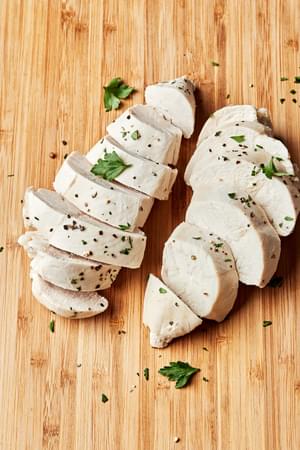
How Do You Know When The Chicken Breast is Cooked?
Wondering exactly how long to poach chicken breasts to ensure moist, tender, perfect meat? As ever, the best way to check for doneness is to use a meat thermometer. After about ten minutes, you’ll want to stick an instant-read meat thermometer (this is our favorite) into the thickest part of the chicken breast. Once you get a reading of 165°F, consider that chicken poached!
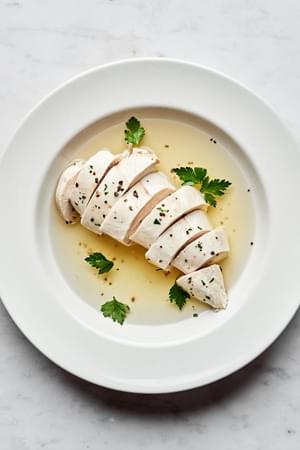
Is Poached Chicken Healthy?
Boneless, skinless, perfectly poached chicken breasts are about as healthy as any food could be. No fat is used in the cooking process, and the chicken gets plenty of moistness from its gentle simmer in the poaching liquid so you can use skinless breasts without compromising any juiciness. Poached chicken breast is a lean, mean, delicious protein machine.
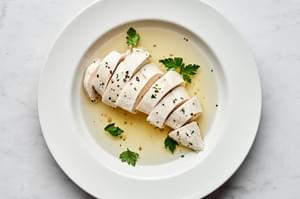
The Best Poached Chicken...
...is one that suits exactly your own tastes! Customize this poached chicken recipe and make all of your juicy, boneless, skinless chicken breast dreams (you have those too, right?) come true by playing around with the poaching liquid. A plain poaching liquid—just water and salt—yields a final product that is simple and versatile, but you can also flavor it with herbs and spices. Our favorite add-ins include:
Fresh herbs! Think a spring of rosemary, fresh thyme, or a handful of parsley.
Aromatics! Fresh peeled garlic cloves, some onion, or even whole peppercorns. Peeled fresh ginger is delicious, too.
Salt! This is a must—whatever else you add or don’t add, don’t skip a pinch of salt.
Broth instead of water! Swapping chicken broth for some (or all) of the water is an easy way to intensify the savory, meatiness of simple poached chicken.
A little wine or beer! If you’ve got some around, a pour of either white wine or beer will add dimension and complexity to the poaching liquid.
Can You Use Chicken Poaching Liquid?
Yes! Save that chicken-y liquid, especially if you tossed some herbs or aromatics. Strain, then refrigerate (if you’re going to use it soon) or freeze the ultra-light poaching liquid and use it as you would store-bought chicken broth. It will be lighter in flavor than traditional chicken broth, but (of course!) much more flavorful than water. Try using it in place of water the next time you cook rice or quinoa, or use it as a delicately-flavored soup base.
Our Favorite Poached Chicken Recipes:
Having poached chicken breasts in the fridge, ready to use at a moment’s notice, is probably our number one meal prep tip. Slice it, melt cheese on it, shred it—however you use it, it’s a busy cook’s best friend. Here are a few of our favorite poached chicken recipes:
- Low-Carb Chicken Divan. Creamy, cheesy, and broccoli-y, our healthy version of the retro fave wins everytime.
- Quick and Easy Chicken Noodle Soup. Comfort in a bowl.
- Chicken Street Tacos with Mango Slaw. Tacos are obviously the greatest way to use just about anything, but poached chicken is a surprisingly perfect taco filling—its clean and delicate flavor is the perfect base for all your favorite taco toppers.
- Tikka Masala Soup. Fragrant with the spices of India, this creamy soup warms from the inside out.
- Try using it in flautas!
Tools You’ll Need to Make Poached Chicken:
- A shallow, wide pan.
- An instant-read meat thermometer.
- Patience. But only a little.
Did This Perfectly Poached Chicken Make it Into One of Your Dishes?
Be sure to post a pic to Instagram and tag @themodernproper and #themodernproper. We’d love to see how it turned out and fully expect to hear how much you loved it!
